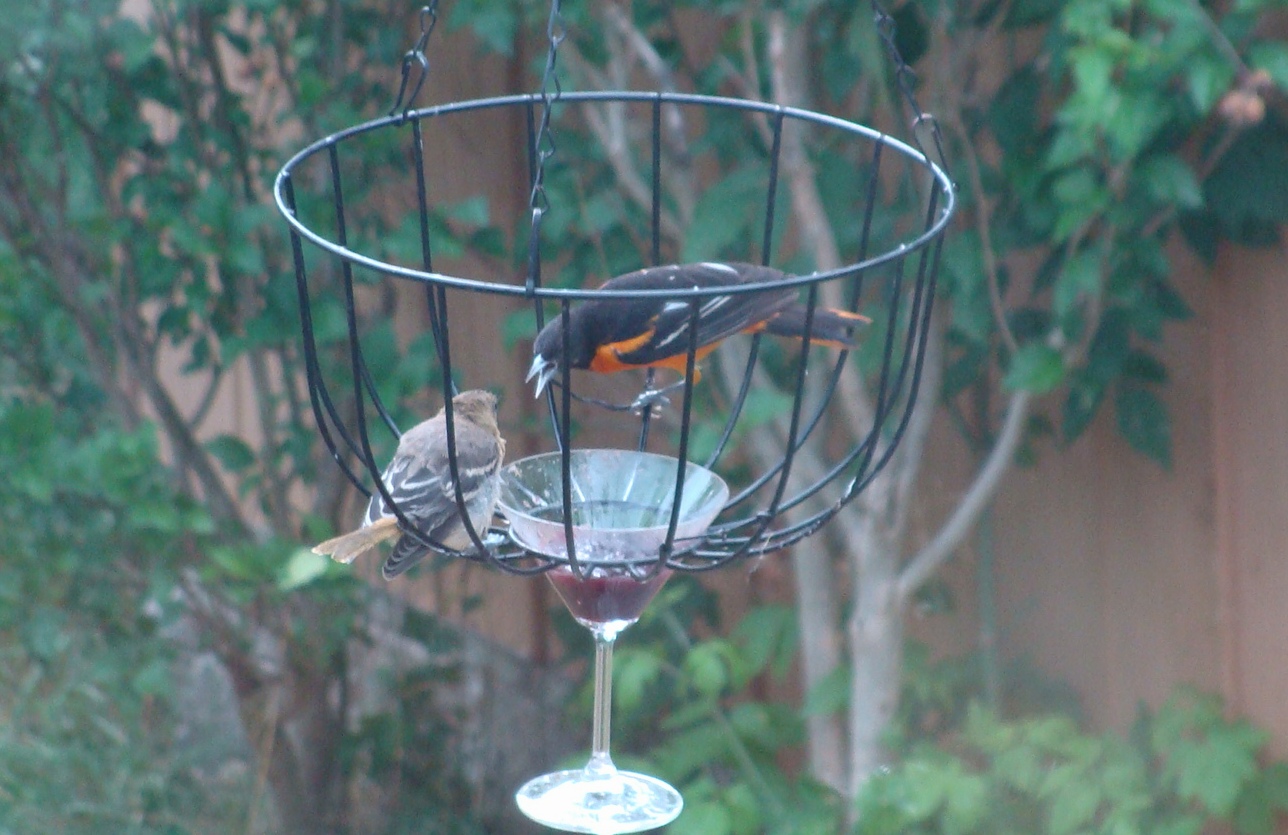
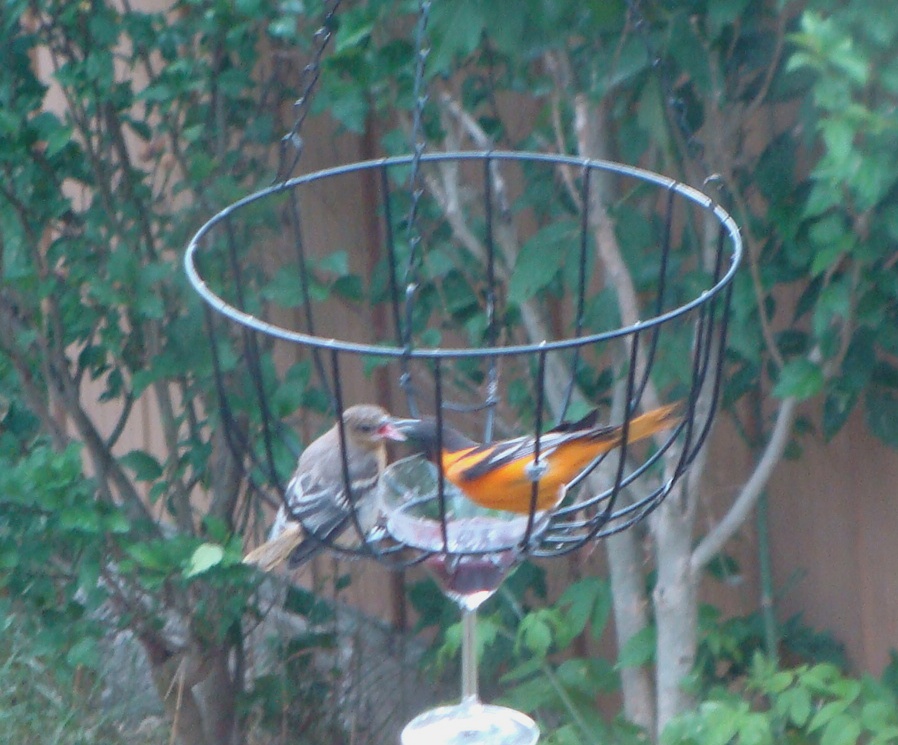
Since early May, when the returning migrant orioles found our two jam feeders, there has been constant traffic from the trees to the jam, back to the trees. Initially it was pretty frenetic and I think we were attracting birds from quite a wide area. [I watched one bird fly from the other side of the Grand River directly to our feeder and then back again, a distance I would estimate of at least 300 meters.] Once territorial disputes were sorted out and nest-building commenced, the flow slowed down – but never stopped. We knew females were sitting on eggs when their presence was just occasional even though the males came often.
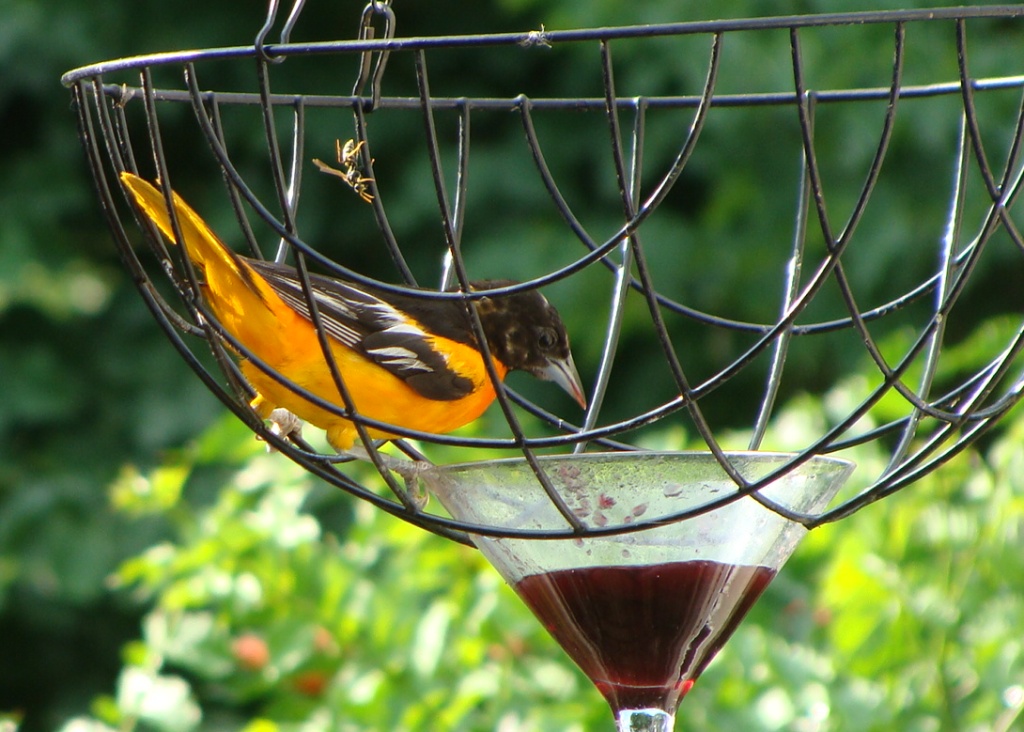
Throughout this time the adults were very definite in what they thought we should be providing. We would take the martini glasses in at night to clean them and then refill them in readiness for the next day. But if they weren’t out there by the crack of dawn we heard about!
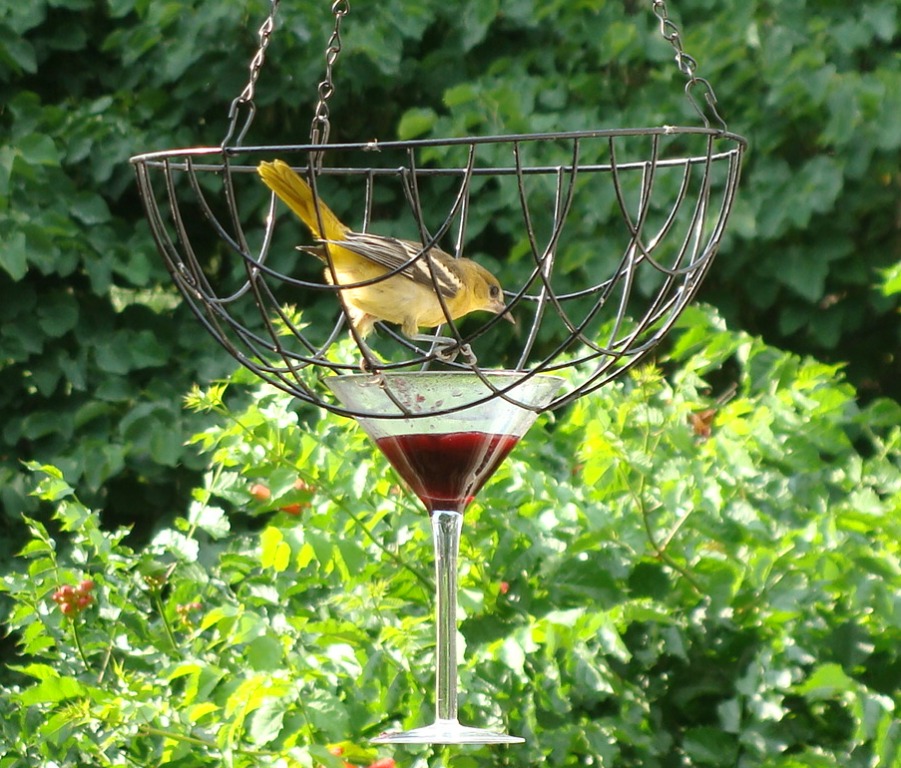
Then, around the beginning of July, another chord (or I guess I should say dischord) was added: the incessant begging chatter of the juveniles:”FEED ME”!!! The adults tend the young for about 12-14 days after fledging. The young birds have a lot to learn: how to fly and navigate through trees and shrubs; how to feed and what to feed on; what to be vigilant about. It’s been interesting to watch the juveniles around the jam feeders. The adults get them as far as perching on the basket rim and will feed them in that position but the young ones have to learn how to navigate the wire on their own. I have seen this result in “face plants” into the jam or a tumble into it resulting in their having to wade to the other side (and then slurp the jam off their legs/feet). But they’re learning quickly and mistakes are happening less and less frequently. Soon the adults will cut them loose – the juveniles will be completely on their own while their parents find a safe place to go through a complete moult, replacing all their feathers before they head south.
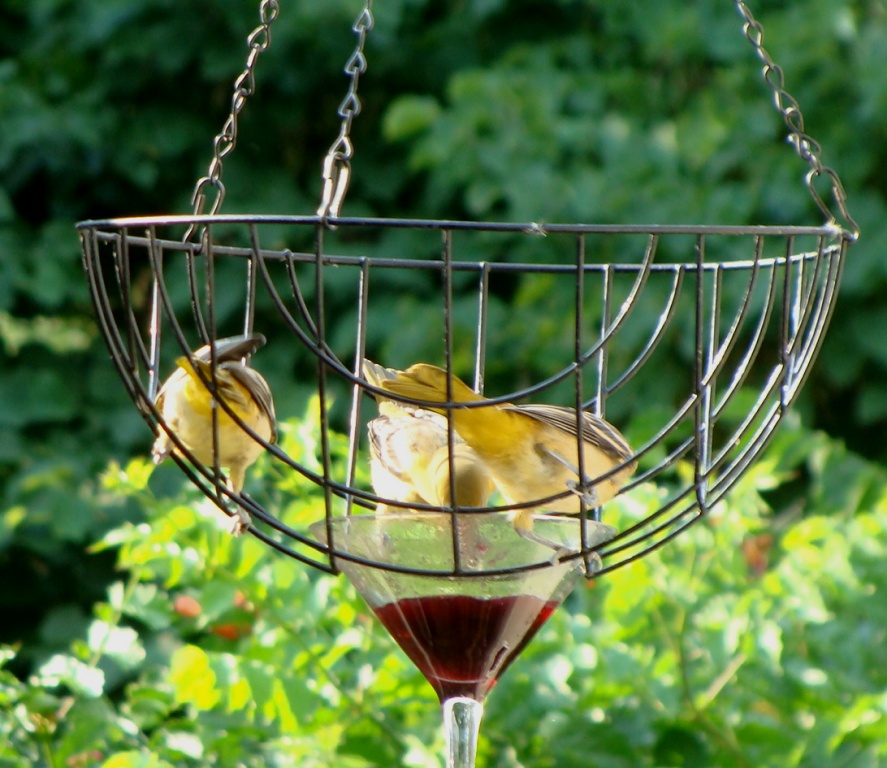
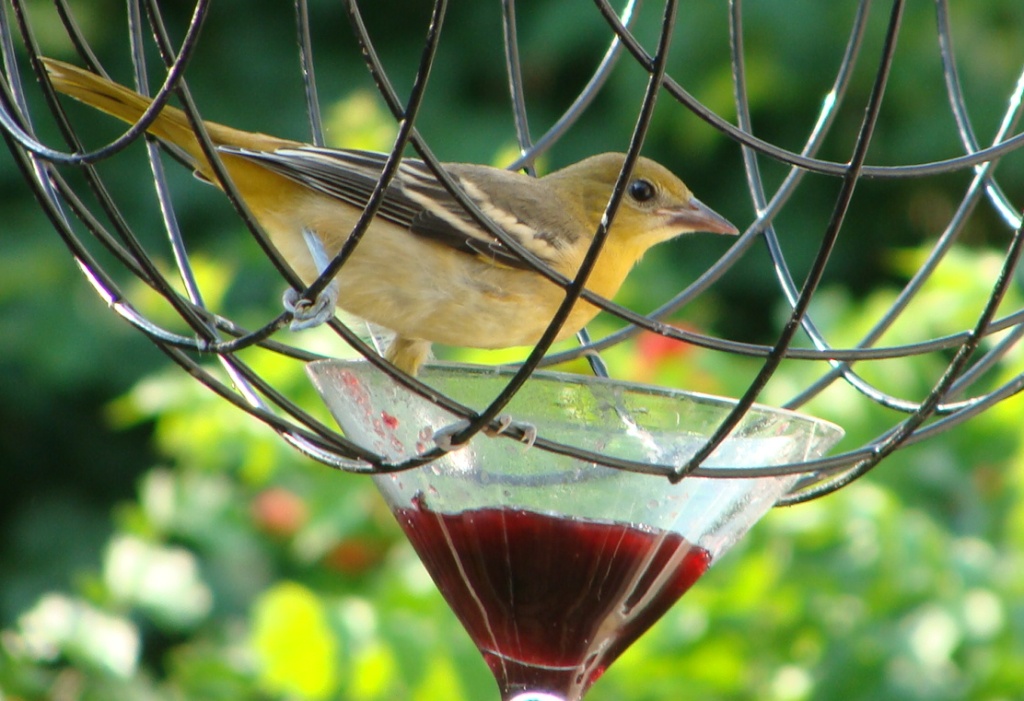
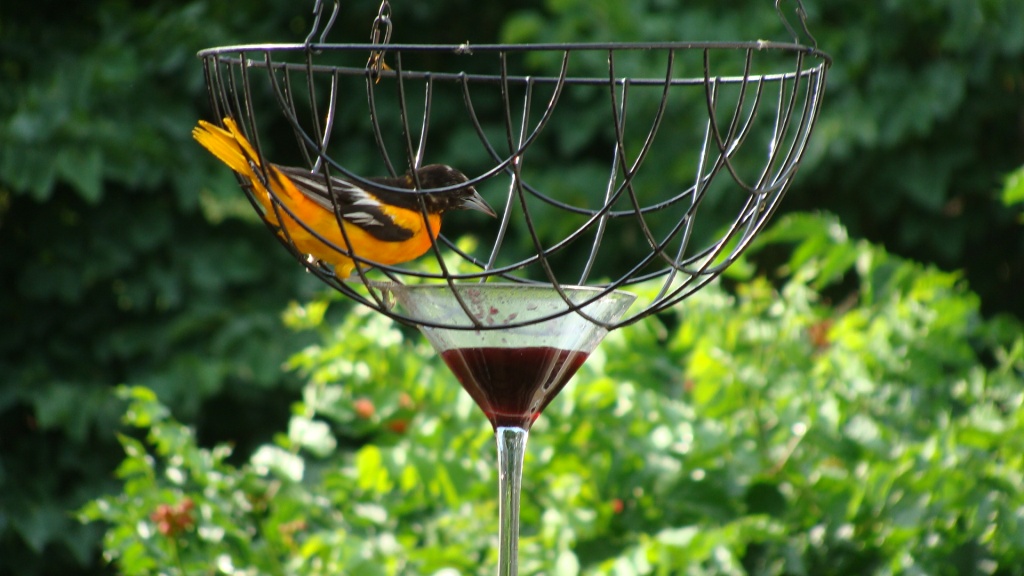
When that happens the young birds will remain in the general area but will begin to expand their radius (“disperse”) as they scope out the various local habitats with a view to where they might like to set up a territory next Spring. In the meantime they will have to watch out for predators. I have yet to see an accipiter in the yard but I’m sure it’s just a matter of time before the “noise” attracts one.
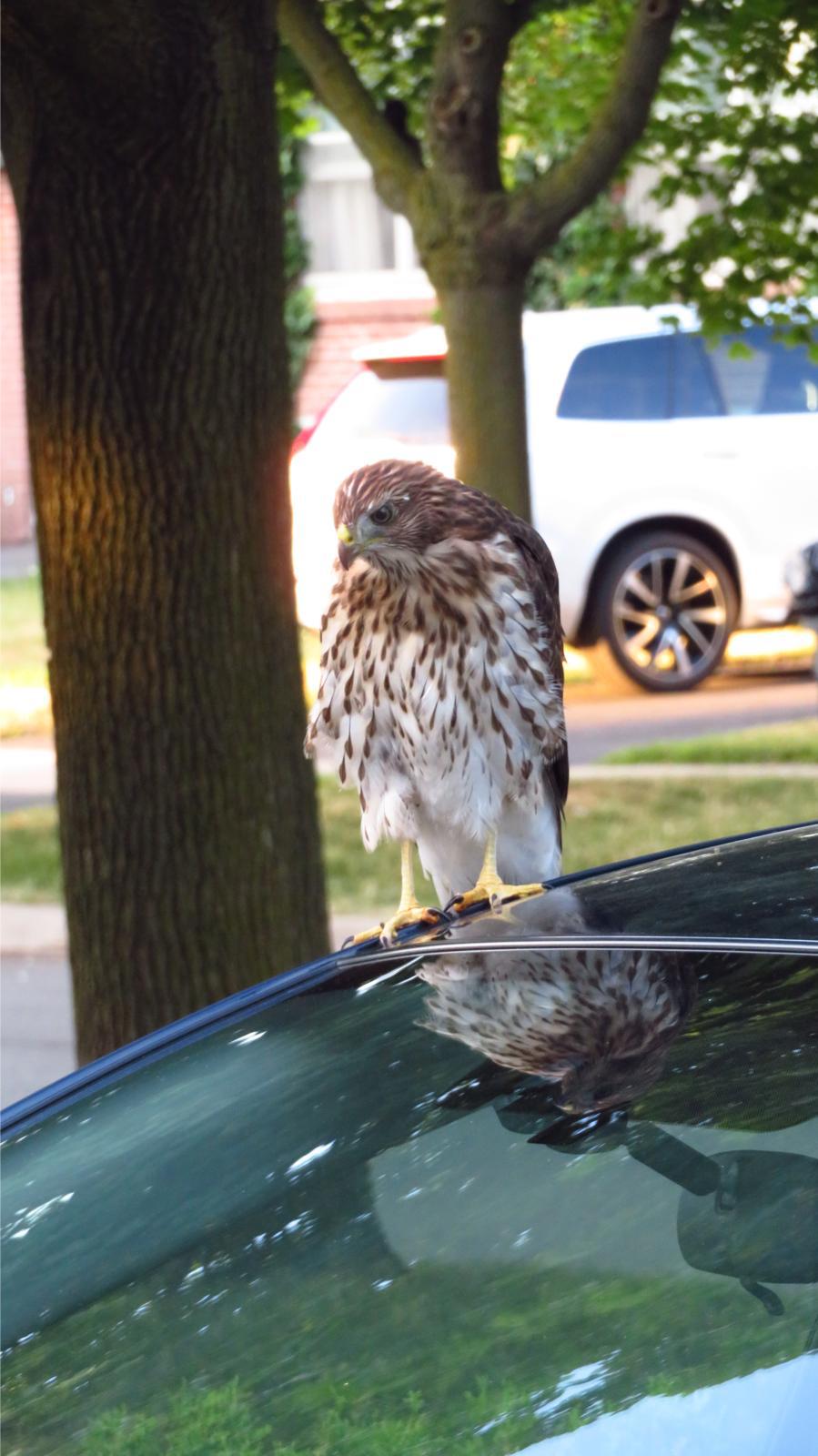
Rick
